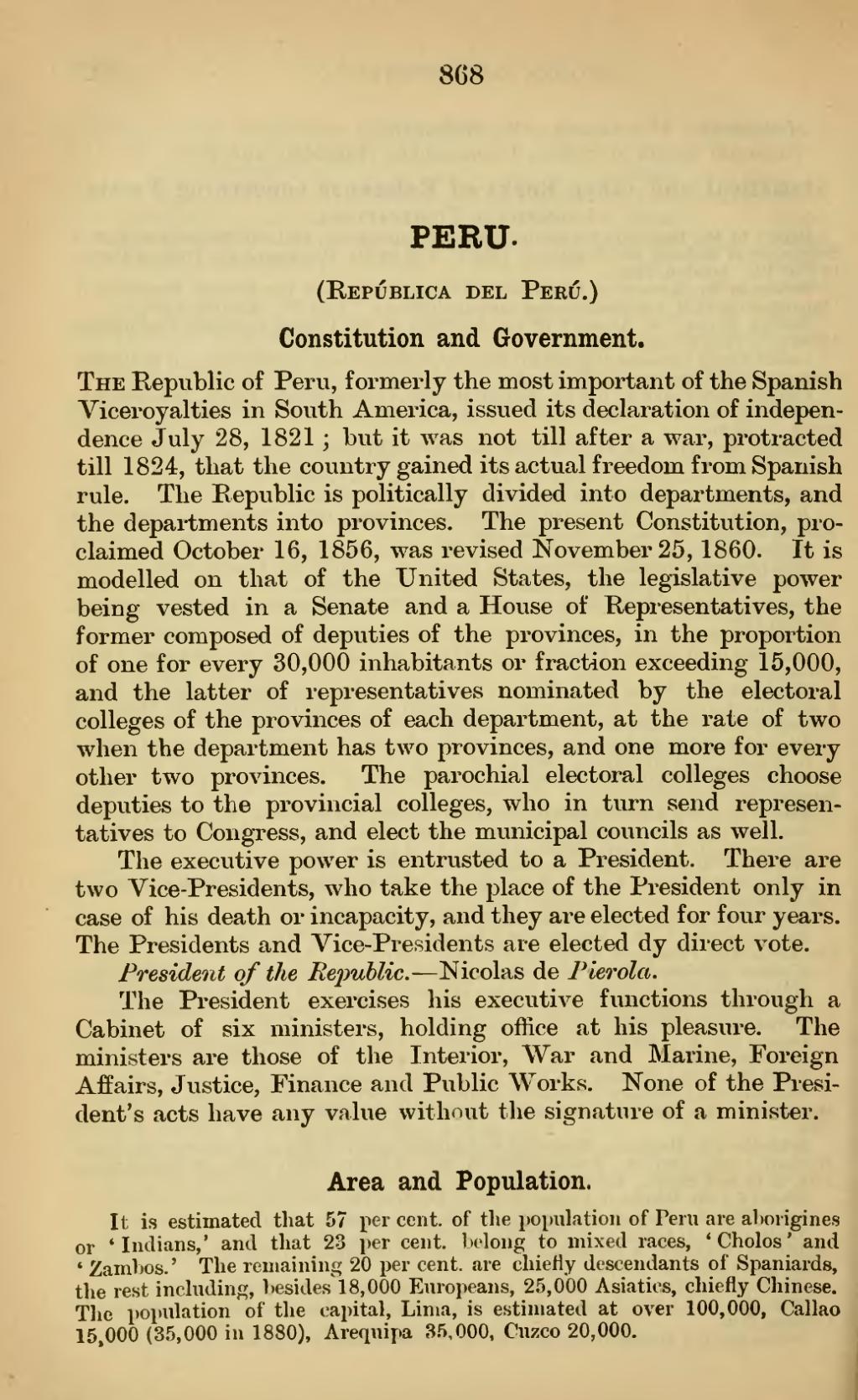868
PERU.
(E-EPUBLICA DEL PeRU.)
Constitution and Government.
The Republic of Peru, formerly the most important of the Spanish Viceroyalties in South America, issued its declaration of indepen- dence July 28, 1821 ; but it was not till after a war, protracted till 1824, that the country gained its actual freedom from Spanish rule. The Republic is politically divided into departments, and the departments into provinces. The present Constitution, pro- claimed October 16, 1856, was revised November 25, 1860. It is modelled on that of the United States, the legislative power being vested in a Senate and a House of Kepresentatives, the former composed of deputies of the provinces, in the proportion of one for every 30,000 inhabitants or fraction exceeding 15,000, and the latter of representatives nominated by the electoral colleges of the provinces of each department, at the rate of two when the department has two provinces, and one more for every other two provinces. The parochial electoral colleges choose deputies to the provincial colleges, who in turn send represen- tatives to Congress, and elect the municipal councils as well.
The executive power is entrusted to a President. There are two Vice-Presidents, who take the place of the President only in case of his death or incapacity, and they are elected for four years. The Presidents and Vice-Presidents are elected dy direct vote.
President of the Rejoublic. — Nicolas de Pierola.
The President exercises his executive functions through a Cabinet of six ministers, holding office at his pleasure. The ministers are those of the Interior, War and Marine, Foreign Affairs, Justice, Finance and Public Works. None of the Presi- dent's acts have any value without the signature of a minister.
Area and Population.
It is estimated that 57 per cent, of the population of Peru are aborigines or 'Indians,' and that 23 per cent, belong to mixed races, ' Cholos ' and ' Zambos.' The remaining 20 per cent, are chiefly descendants of Spaniards, the rest including, liesides 18,000 Europeans, 25,000 Asiatics, chiefly Chinese. The population of the capital, Lima, is estimated at over 100,000, Callao 15 000 (35,000 in 1880), Arequipa 35,000, Cuzco 20,000.

